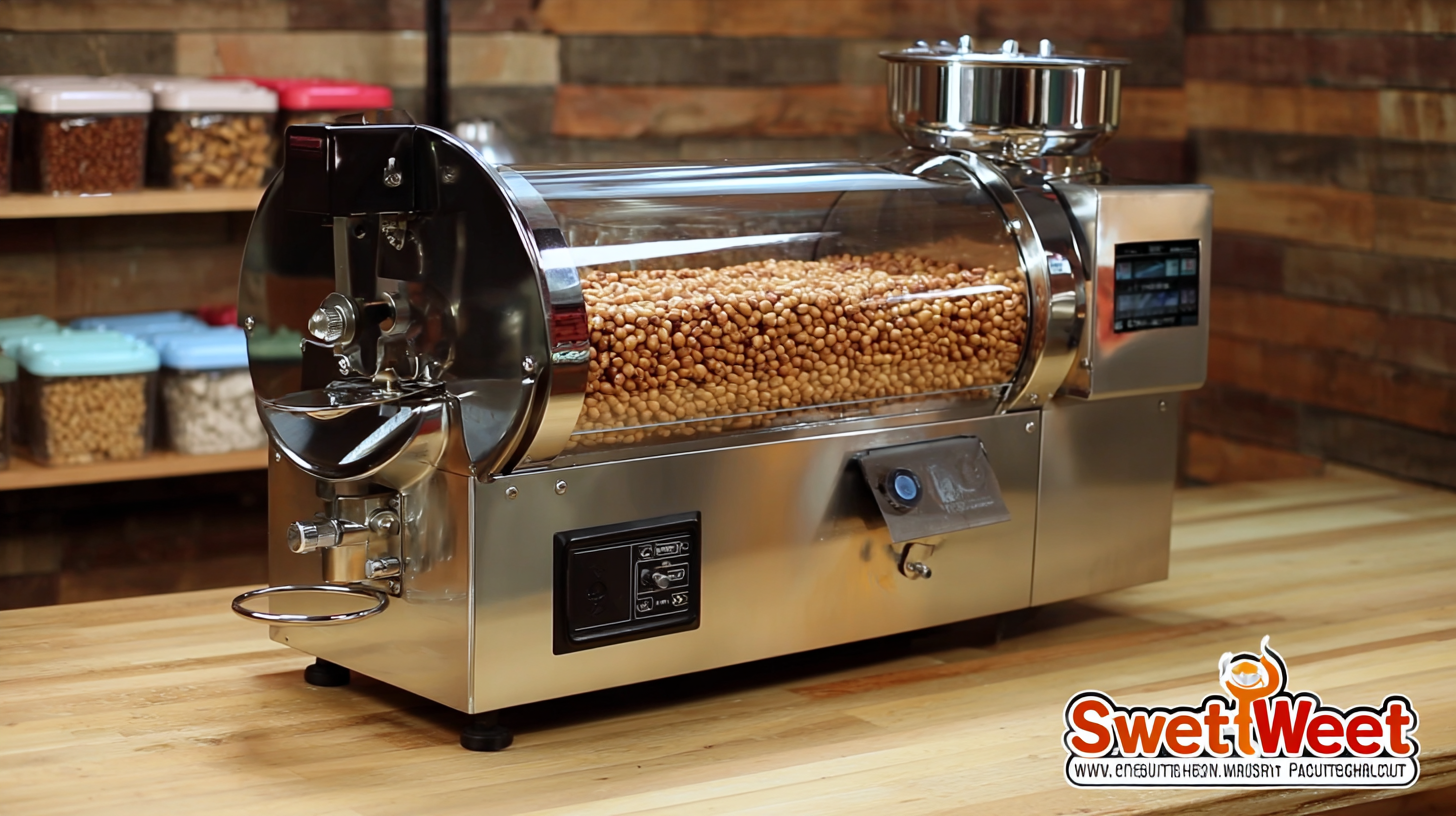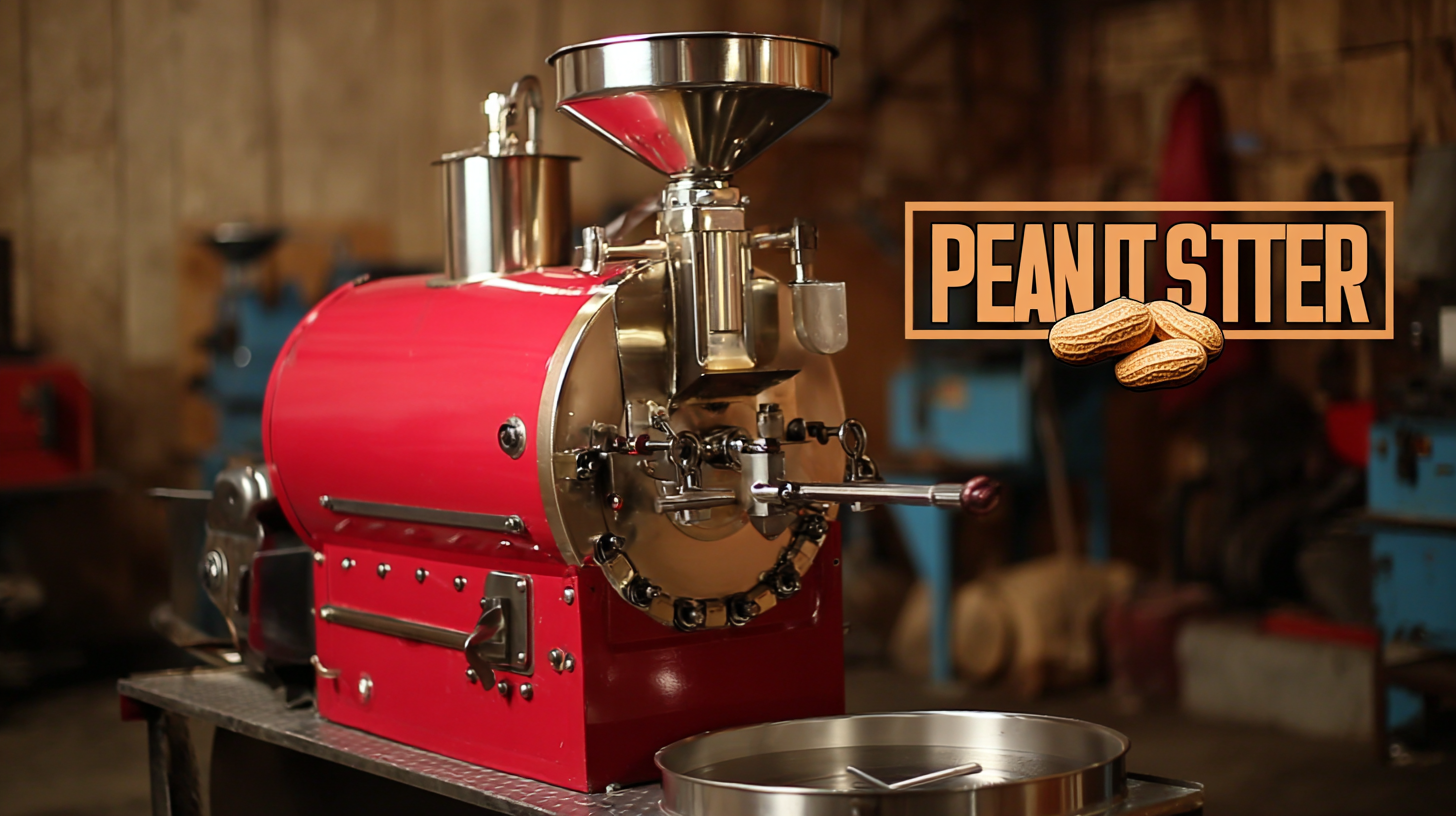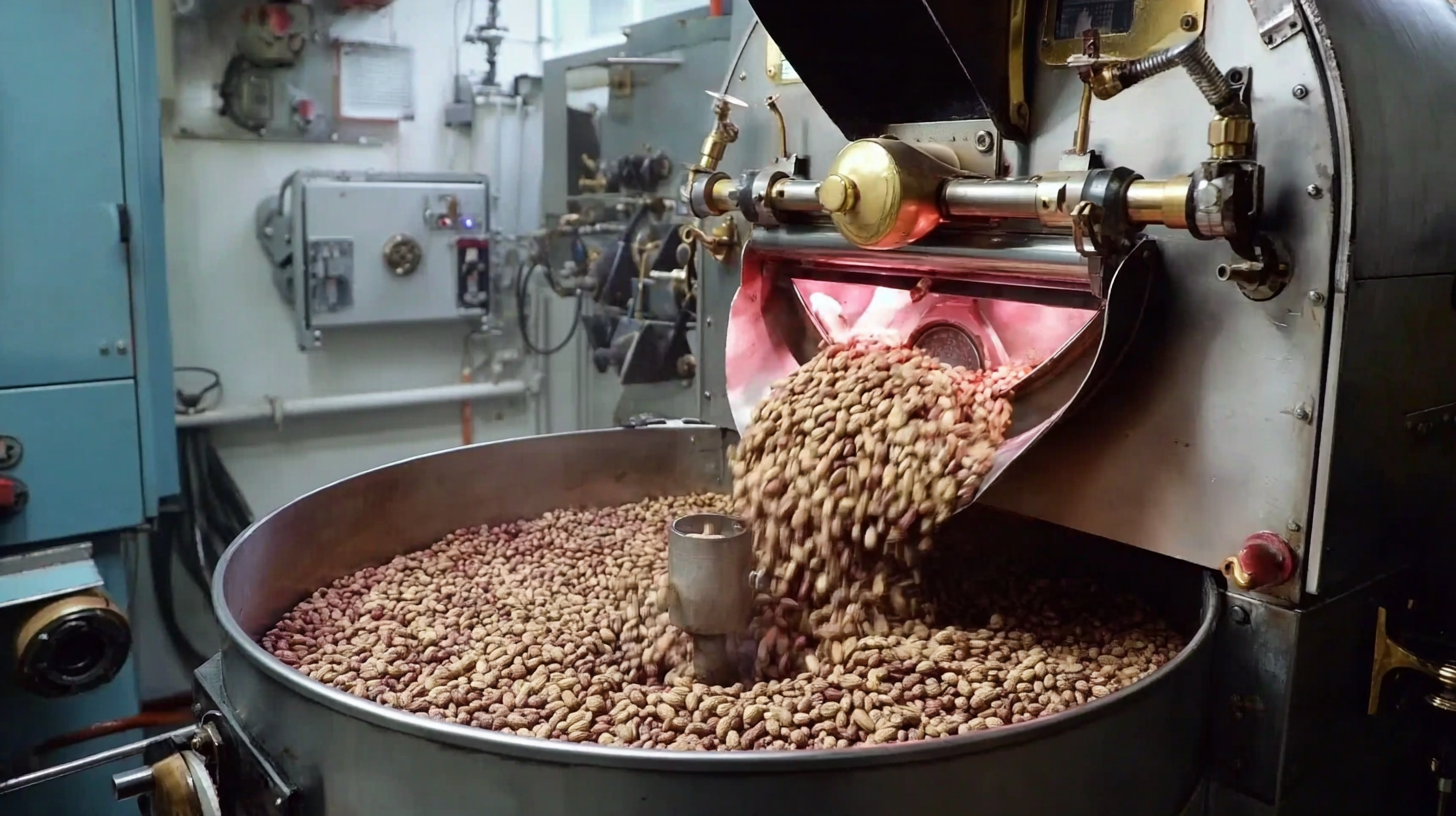How to Choose the Best Peanut Roaster Machine for Your Business Needs
Choosing the right peanut roaster machine is a critical decision for any business looking to produce high-quality roasted peanuts. With a multitude of options available in the market, understanding the specific needs of your business can significantly streamline the selection process. From batch size and roasting time to energy efficiency and ease of use, each factor contributes to the overall performance and effectiveness of the machine. In this blog, we will compare various peanut roaster machines to help you identify the features that best align with your operational requirements. Whether you're a small-scale vendor or a large commercial roaster, having the right equipment can enhance your product quality and boost your profitability. Let’s dive into the essential elements to consider and find the perfect peanut roaster machine that meets your business needs.

Understanding the Peanut Roasting Process: Key Factors to Consider for Efficiency
When selecting the best peanut roaster machine for your business, understanding the peanut roasting process is crucial. Roasting not only enhances the flavor and aroma of peanuts but also significantly impacts their nutritional profile. Research shows that the chemical structure of peanuts undergoes transformations during roasting, leading to the development of distinct flavor compounds and improved digestibility. The heat treatments involved in roasting, such as infrared heating, can maximize the retention of beneficial nutrients while optimizing flavor and texture.
Additionally, the nutritional composition of raw and roasted peanuts varies substantially, impacting consumer preferences and product quality. A comprehensive study indicates that roasted peanuts retain a significant amount of their proteins, healthy fats, and antioxidants, making them an excellent snack option. Furthermore, the roasting process influences the release of volatile compounds responsible for the appealing aroma of peanut products. For example, specific roasting temperatures and times can enhance crunchiness and deepen the flavor profile, which are essential factors to consider when investing in a peanut roaster machine. Therefore, understanding these key elements can help ensure efficiency and high-quality output in your peanut business.
Peanut Roaster Machine Efficiency Analysis
Analyzing Market Trends: The Growth of the Peanut Processing Industry by 2025
The peanut processing industry is witnessing significant growth, projected to reach a market value of over $6 billion by 2025. This surge is driven by an increasing demand for peanut products, including snacks and oils, which are becoming staples in many households globally. According to a recent market analysis report, the consumption of roasted peanuts alone is expected to grow at a CAGR of 5.3% over the next few years. This growth is indicative of shifting consumer preferences towards healthier snack options, positioning peanuts as a powerful nutritional alternative.
As the peanut processing industry expands, businesses must adapt by investing in high-quality equipment, particularly peanut roaster machines. Innovations in roasting technology are enhancing efficiency and flavor retention, leading to better product quality. A report by Allied Market Research highlights that automated roasting systems are becoming increasingly popular, allowing producers to scale up with consistency and precision. With an encouraging outlook for the peanut processing sector, businesses that prioritize modern roasting techniques will be well-equipped to capitalize on this booming market.

Selecting the Right Capacity: Balancing Production Needs and Equipment Size
When choosing a peanut roaster machine, the capacity is a vital consideration that can significantly impact your business operations. According to a recent report by the International Peanut Research Association, the global peanut market is projected to grow at a CAGR of 5% from 2022 to 2027, underscoring the increasing demand for processed peanut products. Therefore, assessing your production needs against the machine’s capacity is crucial.
For instance, a small-scale operation might require a machine with a capacity of 50 to 100 pounds per batch, while larger manufacturers might consider machines that can handle up to 1,000 pounds, ensuring they meet market demands without compromising on quality or efficiency.
Furthermore, the size of the equipment should align with your production goals. A report from Snack Food & Wholesale Bakery indicates that businesses operating with outdated or under-capacity equipment face a 25% increase in operational costs due to inefficiencies. By selecting the right balance between production needs and equipment size, businesses can optimize their output and reduce costs. Understanding the nuances of capacity allows owners to strategically plan for growth and expansion, thereby maximizing both yield and profitability in the competitive peanut processing market.
Energy Efficiency in Peanut Roasters: A Cost-Effective Approach for Sustainable Production
When selecting a peanut roaster machine, energy efficiency should be a vital consideration for businesses aiming for sustainable production. Recent industry reports indicate that energy costs can represent up to 30% of the total operating expenses in food processing. Therefore, investing in advanced roasting technology that optimizes energy use not only reduces costs but also minimizes the environmental impact. For instance, machines featuring infrared heating technology can save up to 40% on energy compared to traditional roasting methods while providing uniform roasting results.

Moreover, energy-efficient peanut roasters contribute significantly to the overall quality of the final product. According to a study by the Food Processing Association, energy-efficient roasting processes can improve flavor retention and reduce oil absorption, leading to higher quality roasted peanuts. Additionally, these machines often come with built-in monitoring systems that allow operators to track energy consumption, further enhancing the ability to manage production costs effectively. As businesses increasingly prioritize sustainability, selecting an energy-efficient peanut roaster machine becomes not only a smart financial decision but also a strategic move towards a greener future.
Comparison of Features: Automatic vs. Manual Peanut Roasters and Their Impact on Business
When deciding between automatic and manual peanut roasters, it’s essential to understand how each option can influence your business operations and product quality. Automatic peanut roasters are designed for efficiency and precision. They offer consistent roasting results, minimizing the risk of burned or unevenly roasted peanuts. This feature is particularly beneficial for businesses that require large volumes of product with uniform taste and appearance. Additionally, many automatic machines come equipped with programmable settings, allowing operators to roast different varieties of peanuts with ease, further streamlining the production process.
On the other hand, manual peanut roasters provide a hands-on experience that some artisans and small business owners prefer. These machines allow for greater control over the roasting process, giving users the flexibility to experiment with roasting times and temperatures. This can lead to unique flavor profiles that distinguish a small batch product in a competitive market. However, manual roasting typically demands more labor and can be less efficient than automatic options, which might pose challenges for scaling up production as demand increases. Each option carries its own set of advantages and potential drawbacks, ultimately depending on the specific needs and goals of your business.
How to Choose the Best Peanut Roaster Machine for Your Business Needs - Comparison of Features: Automatic vs. Manual Peanut Roasters and Their Impact on Business
| Feature | Automatic Roaster | Manual Roaster |
|---|---|---|
| Ease of Use | Very Easy | Requires Skill |
| Production Speed | High | Low to Moderate |
| Control Over Roasting | Limited | High |
| Consistent Quality | High | Variable |
| Initial Investment Cost | High | Low |
| Maintenance Required | Moderate | Low |
| Power Consumption | High | Low |
| Training Required | Minimal | Significant |


